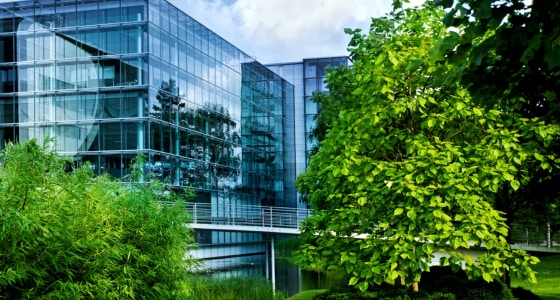Let there be daylight

How daylight works in buildings is hugely important to their functionality and occupants. That’s why a new European standard on daylight will be so valuable to designers, architects and developers.
It’s easy to take it for granted, but daylight in buildings is actually important stuff. It provides light and the vivid rendering of colour. It gives us variability as light levels change throughout the day and seasons. Daylight openings – windows and roof-lights – also provide views, which are actually a psychologically important connection to the outside world for building occupants. And openings supply exposure to sunlight indoors – an especially important attribute in dwellings, hospital wards and nurseries.
So attention needs to be paid to daylight in buildings. It should be a significant source of illumination for all spaces with daylight openings, not least because we humans strongly favour daylight over artificial light, and also recognize that it saves a lot of energy. It’s therefore important that architects, designers and developers get daylight in buildings right – which has led to the creation of BS EN 17037:2018 Daylight in buildings.
The European standard
BS EN 17037 sets out the elements which give buildings an adequate subjective impression of lightness indoors from natural light; and which achieve an adequate view out. An adequate view out is one which provides visual contact with the surroundings and gives building occupants enough information to experience weather changes, to follow time over the course of the day, and to gain refreshment and relaxation from a change of scene and focus.
The standard also supplies recommendations on the duration of sunshine exposure in occupied rooms and gives information on how to use daylight to provide lighting within interiors, at the same time as limiting glare.
The standard defines the metrics that can be used to evaluate daylighting conditions and provides principles on calculation and verification. The principles help users tackle the wide variability of daylight evaluation with changes over the course of each day and each year. The standard covers all the spaces that people might occupy regularly for extended periods of time, except for spaces which for a particular reason do not require daylight. For instance a home cinema room.
The standard covers daylighting performance over the whole year and wants daylight to light up spaces for a significant fraction of the annual daylight hours over the course of the year.
The standard also allows building designers and developers to target their ambitions with respect to daylighting. Finally, it also tackles other issues related to daylight design including protection against glare and exposure to sunlight.
Taking over from the BS
BS EN 17037 is the first European standard on this topic but in the UK it takes over from and replaces the British code of practice for daylighting, BS 8206-2, last published in 2008.
BS EN 17037 includes a lot of material which wasn’t covered in the BS. Among the additions, the more important cover the use of median daylight illuminance and a new metric for daylight glare. A new method for assessing sunlight in buildings has also been added to have new ways of assessing views.
This new European standard was written by experts to provide a one-stop document which rounds up the latest thinking on daylight in buildings and presents it in one place. Developers, designers, architects and anyone else involved in lighting design will benefit greatly from getting a copy.

